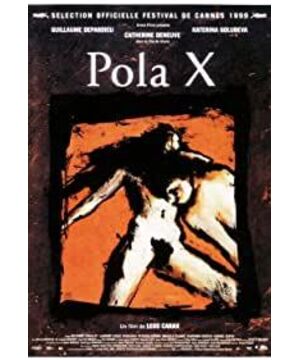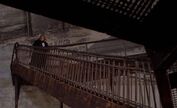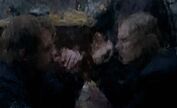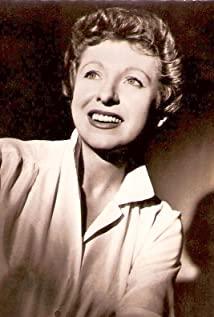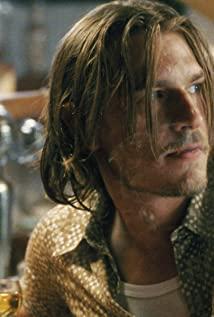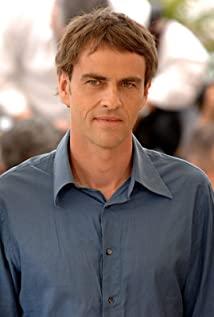Originally, it was planned to be divided into ten small chapters, for example, the other triangular relationship was skipped. Because at first glance, I feel that "Pola X" does have the shortcomings of immaturity and lack of eloquence, but after several characters are unfolded, it is found that there are inextricably linked. Looking back, I wonder if it is really necessary to investigate in this way. In the end, I don't know, but since it is written, it is always a meaningful thing.
1.
Pierre Pierre lives with his mother and has a girlfriend who is about to get married.
Pierre is an accomplished young writer, but he hides his true identity under the pseudonym "Aladdin".
Pierre met a ghostly face of a woman with long dark brown hair, always watching him secretly in dreams or reality. He knew that this woman was related to him, and there was a lingering shadow of panic in his heart.
Karax says Pierre is a tragic figure, in Karax's film, and even more so in Melville's novel. Pierre in Melville's original novel suffered from Hamlet's inner torment, hesitation and anxiety, anxiety and resistance. He accepted his sister with magnanimous trust and even fell in love with her out of control.
In "Pola X", Pierre's suffering is contrasted by the contrast of the tones before and after the film and Pierre's suffering, dazzling light and extreme darkness. Before Paris, the pictures always had a golden yellow tone, warm and sweet; after Paris, the pictures tended to be gray and condensed, Pierre was always in a noisy place, and underground bands frequently made harsh sounds.
The days of having a mother to take care of his girlfriend are finally over, and Pierre takes on everything his sister needs. In Paris, Pierre is completely unsuitable for the rules of the real world. He is extreme and impulsive. He has an instinctive resistance to the rules.
The death of his mother, the loss of his inheritance, the disdain of others, and the disability of his legs and feet, Pierre chose to self-exile so completely that Pierre, who fell into despair, wrote frantically, his hair and beard grew. He abandoned the dazzling youth novels of the past, and chose to explore the truth and essence of life. His recklessness just proved his immaturity. Sure enough, his manuscript was rejected, and his sister also learned of his lies. His heart was experiencing unprecedented conflict and opposition, and in the murmur he embarked on the road of destroying everything.
The ending of the film made me feel the shock of moths to the flames. I haven't seen such a straightforward ending for a long time. It is self-sacrifice rather than destruction. The end of despair, the destruction of life, this other layer is another story.
2.Pierre & Isabelle
Pierre and Isabelle constitute the whole of "Pola X". The obscurity of "Pola X" is that the main line of the story is not clear. Sister and brother incest is a blood taboo, the film does not take this as a gimmick but arranges more foreshadowings, and the more subtle concept behind it is a classical tragedy.
The camera follows Pierre chasing Isabelle's footsteps into the depths of the dark woodland, where branches and leaves spread and weeds are messy. In the woods in the dark night, Isabelle narrated the nightmare panic in memory, the ghostly figure, the vague raving, the truth that shocked Pierre. Pierre must have believed that the thin woman in front of him was his sister—a sister who had a miserable life and no one to take care of, and that he wanted to save her from all sorrows.
Karax only told half of the story, one could even say he was confused. Before, I only paid attention to the subtitles to understand the narration. It was only when I watched it for the second time that I was fully absorbed in experiencing the sense of detachment and the natural light in the dark night.
Pierre fatefully believed Isabelle's confession, he didn't need to ask his mother for confirmation, he just wanted to break with the glitz around him. He accepted everything about her, her body and even her soul. They were struggling in the dark red blood, and they were about to fall into the abyss, but they hugged each other tightly, entangled and inseparable.
Isabelle has a fiery and deadly love for her brother, and she is so vulnerable that she plays the violin in tune. Her face was pale and thin, and she was extremely afraid of her brother's suspicion of her identity. She was afraid that her brother would leave her, and she would always hide in the darkness without the light of day.
The mystery of Isabelle's identity is that no one can confirm that she is Pierre's sister. The taboo that Pierre ignores is more like a tragedy of love and love, and once Isabelle's identity is false, the whole story is an elaborate and absurd deception. It's all very cruel. Such ambiguity is better to say that Carax lost control. This should be a classical tragedy. I would rather believe that Isabelle is the devil in Pierre's heart and is Pierre's alter ego. The film shows Pierre's search process through his sister Isabelle.
"Paula X" makes it impossible to question Isabelle's love for her brother, even if she appears helpless more often. Until the end, it was not revealed whether Isabelle was Pierre's sister. Let's believe her words: "I am your sister, and what I tell you is true", but at that moment Pierre was already silently waiting for the judgment of fate. He can no longer jump into the water without hesitation, saving his sister's life, the way Isabelle did before. Isabelle's hope vanished in an instant. Seeing her brother being escorted into the police car, her eyes were so confused, her expression was so desperate, and the greetings of death flashed across her heart.
3. Three Inseparables
At the outdoor table where Pierre and Thibault reunited many years later, Thibault described the relationship between them and Lucie like this, but the reality is "two plus one" in Thibault's view, Pierre and Lucie immediately Going into the church.
The level of intimacy between the two led to the belief that they had a lot to do in the past, and it was more certain that Thibault loved Lucie as much as Pierre, if not more. Thibault blesses them with a smile, but hides something.
The relationship between Pierre and Lucie seems to be beautiful, but it is fragile. Lucie is standing on a high shelf in a white wedding dress, shaky and dangerous.
On the eve of the wedding, Pierre said goodbye to her and ran off to Paris in a hurry. So it is not difficult to understand why Thibault was cold and mean in the face of Pierre's request for help. He even repeatedly blocked Lucie's meeting with Pierre and told Isabelle the truth. As a friend and a cousin, Thibault is more like a conspirator hiding behind his back and peeping, and he accepts everything that should belong to Pierre as a matter of course. Thibault realizes that Pierre's madness will destroy him, and he indulges him, but he doesn't expect to end up getting burned.
In fact, Lucie realized the sacrifice that Pierre chose, and she came to accompany Pierre despite the resistance. She was sick, coughing and dying, and she saw Pierre leave her.
The French call the love parrots The Inseparables, which means never parting, the most romantic, the open grass watching the growth of Pierre, Thibault and Lucie, "Pola X" arranges the changes in the three of them. Test, complex identity relationship, do not want to finally parted ways. Another triangular relationship in the film is Pierre and two women, which will be skipped here.
4.Isabelle, Marie, Lucie, Thibault
Isabelle is Pierre's half-sister; Marie is Pierre's mother; Lucie, Pierre, and Thibault grew up together.
The four of them are important figures that influence Pierre's fate in the film.
The film opens with a vision of Pierre and the villa where he lives. The grass is green, and the spray of sprinkler irrigation reflects the colorful broken light in the sun. The camera starts to sway up and down comfortably, and Marie can be seen sleeping through the gap in the window.
A new day is about to start, and Pierre and Marie have this dreamy life, Pierre rides the motorcycle left by his father and leaves, he goes to meet his fiancée Lucie to drop her off at work and then go home to write. In the film, the title and behavior of the mother and son are quite ambiguous, and there is a more intimate layer. So Pierre's departure was an unbearable double blow for Marie.
Once when her son came home, she noticed that he was hiding something on his mind, and she watched him run into the room with an uneasy expression. Later, when her son disappeared, she hired detectives to find him. Unable to bear the jokes of life, this splendid lady fell into infinite grief.
She got on the motorcycle like her son always did, and galloped in the dark night, the dense branches and leaves above were swept back as if flying in the night under the light. Suddenly the front of the car swayed and fell suddenly, and the car spun and rubbed on the ground.
Thibault supported Lucie at the funeral, and the two looked solemn. Pierre hid in the distance and watched the parting of life and death but was unmoved, maybe it was just an illusion, he never went back at all.
5. Fifty minutes of sunshine,
no matter day or night, Pierre fully enjoys the sense of speed brought by motorcycles, and the sense of speed that gallops between heaven and earth with the air. He commutes between the villa and Lucie's house, enjoying the thrill of speed and risking an accident. The first accident happened in pursuit of Isabelle, after which the motorcycle became scarred.
A supposedly important role was deliberately downplayed - Georges Valenbrus, a French diplomat. The character "father" doesn't get much attention in "Pola X", even leaving only a name, but he left Pierre a considerable legacy and a humble motorcycle, and he even directly contacted his sister Isabelle ( This is also the bond that binds her to her brother). It's not hard to understand Pierre's shock to see his sister's unresponsiveness in the face of his father's biography, his desperation almost suffocating him.
The first half of "Pola X" has too many beautiful scenery, but only fifty minutes of bright sunshine. After fifty minutes of the story, Pierre came to Paris with his three sisters, walking without stopping, walking on the streets of the city like this. The mysterious and tragic death of the little girl accompanying them cast a heavy shadow on their hearts.
They settled down in an abandoned factory building that looked like a terrorist's lair. An underground band who rehearses all day long, they are passionately producing noise-like music, and similar scenes appear many times before and after. Sometimes full of absurdity, sometimes heralding the protagonist's anxiety.
Like Pierre, they have dreams and even plans to subvert the real world, but they are conveyed through music and Pierre put it into writing. No one knows if they will end up using violence to vent their grievances, and the fact that the shooting at the shooting range creates the illusion. They helped drive away Pierre's hideous cousin; the conductor and Pierre had a great conversation on nights when the rain washed the glass windows. In the end, where Pierre found two guns to express his dissatisfaction with the truth, he went to the altar of sacrifice.
6. Characters, Scenes, Symbols The characters in
"Pola X" are by no means thin. Thibault is not the villain with the word "bad" written on his face, he appears just as Pierre is getting married, and he points Pierre to the woman who is peeping in the distance. Luice is not a noble lady who only grieves and weeps, she follows Pierre, she knows that he is burning and is about to dry up, knowing that she can't persuade and can't leave.
When faced with the good things in the world, Pierre's choices and sacrifices are to leave them all behind. The flaw in the film is that he doesn't really want to escape some kind of truth, and there is no irreconcilable relationship between his sister and mother. Conflict and contradiction, the setting of these two character symbols with opposite colors makes the whole tragedy appear more suddenly.
"Pola X" arranges the dark forest, the sister who guides the newborn, the little girl who died mysteriously, and the abandoned underground factory. The scattered symbols can be corresponded one by one in the tragic works. The choices and sacrifices made by Pierre will inevitably affect the people around him. People, his breakup is reckless, whether it's his sister, girlfriend or even his mother, he can't escape his fate in the end.
The tragedy of his fate is presented in Karax's image, which is bizarre and lingering. Maybe this is not his intention, but in Melville's novel, Pierre's inner suffering is definitely like a storm, and the conflict of fate is particularly intense.
Compared with the novel, the film is a lot more peaceful in narrative, and all the scattered branches near the end are merged into one place: a certain street in Paris. Pierre held two guns, the muzzles of which were slowly poking into Thibault's mouth. Pierre threw him out resolutely—probably the only way to show how much he hated it was such a brutal act. Shards of glass were scattered all over the place.
After Pierre was taken away by the police like a dead silence, his sister also disappeared from the world, and only Luice's tears were left in his memory.
In the first 60 seconds of the black-and-white documentary, the plane whizzed past, the shells smashed into the cemetery, and the ashes were annihilated. Karax said it was the situation in Bosnia and Herzegovina that gave him this nightmare experience, with planes and artillery shells not only trying to destroy everything, but also memories.
http://www.mtime.com/my/moviel/blog/173185/
View more about Pola X reviews


